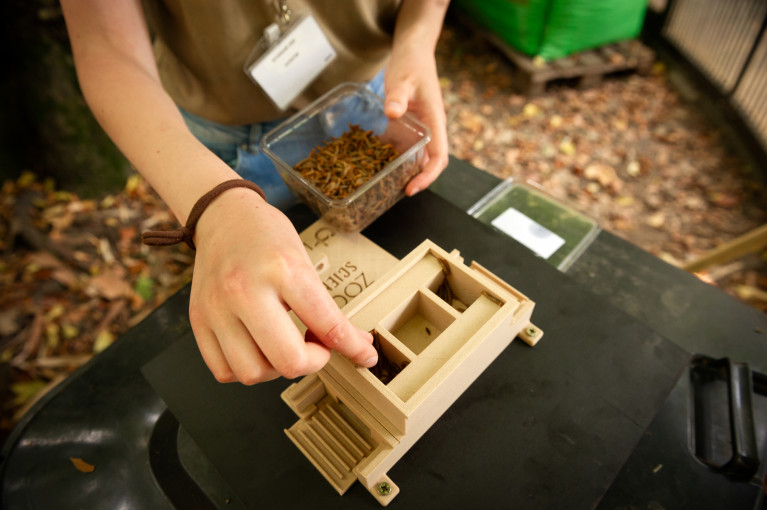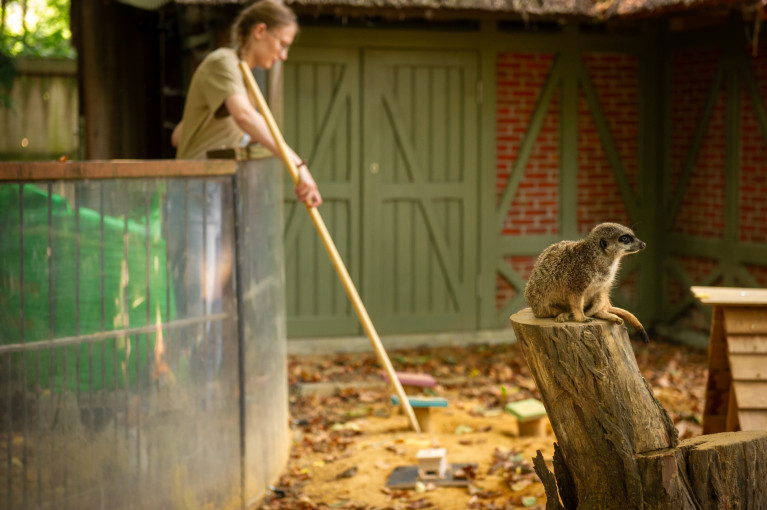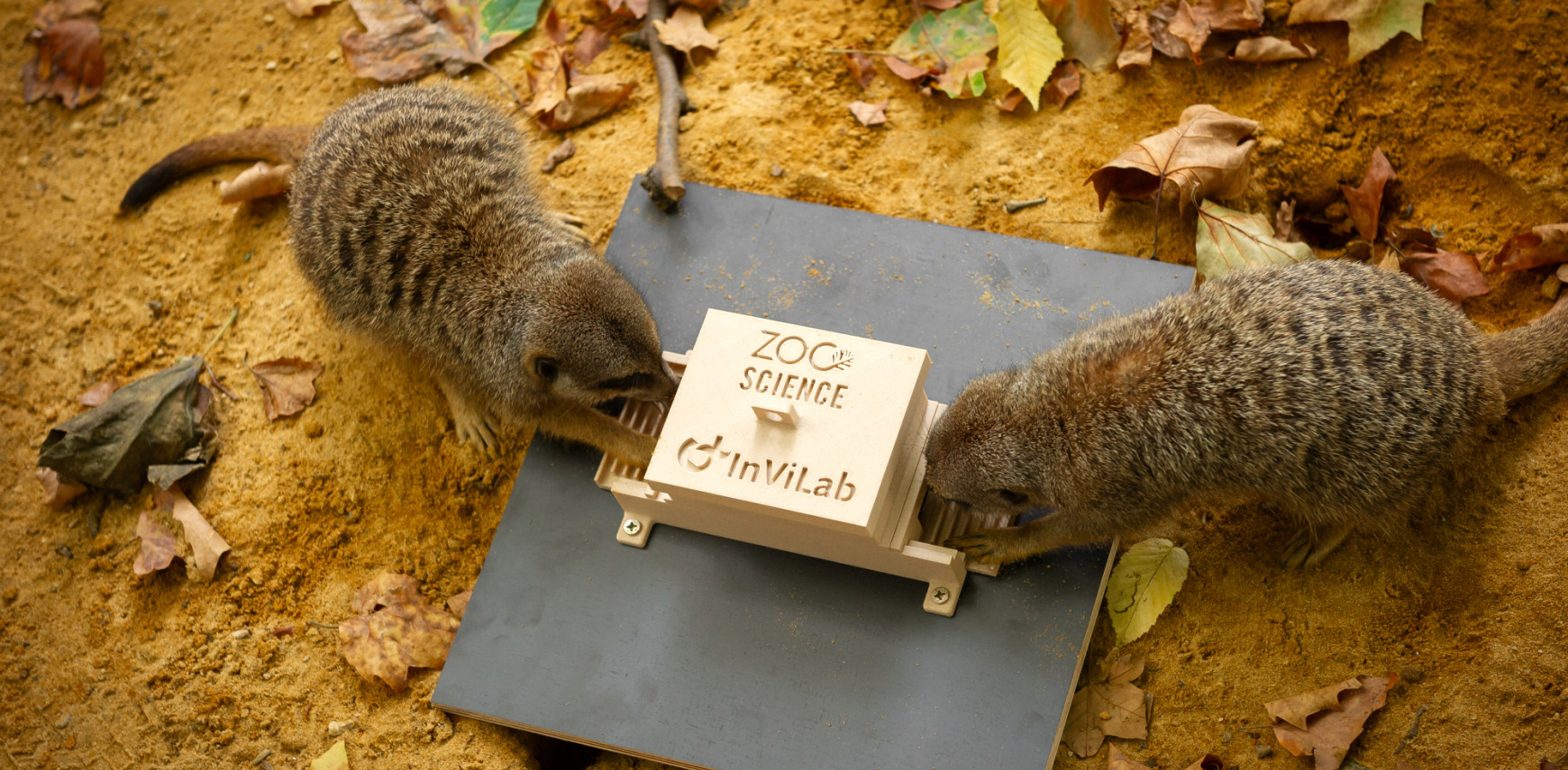Teamwork or egoism? Antwerp ZOO investigates collaborating meerkats
‘Are meerkats particularly skilled at cooperation?’ This question comprises the foundation of a new scientific study conducted at Antwerp ZOO. Researchers used a 3D printer to develop a special device to present the animals with a unique challenge. Can two meerkats cooperate successfully enough to secure a delicious treat for both of them? Or will they, driven by self-interest, end up empty-handed?
The device that the meerkats have been regarding with curiosity for the past ten weeks is actually a box with two sliders, sort of like flat drawers, on opposite sides. Holes in the box allow the animals to smell the meal worms hidden inside. ‘If one animal pulls out a slider on one side while the other pulls out the one directly opposite, the component containing the treats will drop down’, explains scientist Jonas Verspeek. ‘So, cooperation pays off in this study.’
Cooperation pays off in this study.

A step-by-step method is used to teach the meerkats this behaviour. ‘We started out by teaching them to pull on the device to get a treat. The next step we introduced is of crucial importance: only if both animals pull on the sliders at the same time will they get a treat. Once they mastered this, we made it a bit more difficult by attaching an elastic band to the sliders that creates enough tension to force them to exercise a bit more strength before the treat is released.’
Outstanding cooperators
Antwerp ZOO is home to two groups of meerkats and yellow mongooses, and Planckendael ZOO to a group of banded mongooses. These species are excellent candidates for studying the complex mechanisms of cooperation. ‘Having observed various groups meerkats and related species in their natural habitat, we noticed that they have a natural inclination for cooperation. The familiar image of the solitary meerkat standing watch on an elevated plateau to sound the alarm in case of danger is a typical example of that.’

‘Meerkats live in actually quite complex societies, in which various relationships are formed. They also provide “allomaternal care”. This is when one female takes care of another’s offspring. We know from research that higher levels of allomaternal care tend to result in increased cooperation. Behaviour like this, in which you put the needs of others before your own, is called prosocial behaviour.’
Future use
The researchers will be observing the meerkats’ behaviour very closely for ten weeks. ‘Every working day, we give the animals access to the device for one hour. We meticulously record the extent of their cooperation, but also look further than this. What are some of the factors that impact their behaviour? Which animals are more likely to cooperate? Are there any individuals that tend to monopolise the device? Or are there any meerkats that stay away from the device when others are near it?’
Apart from the scientific value of the device, it also serves as an enrichment of their environment. ‘The zookeepers can continue using the device to offer the meerkats their food in a different, creative manner. Thanks to this device, the animals will spend more time searching for meal worms and need to make more effort to obtain their food – just like in their natural habitat.’
Apart from its purpose as a research tool, the device can be used to offer the meerkats their food in a creative manner, just like in their natural habitat.
More than meerkats
Studying cooperation among meerkats is part of a larger comparative study conducted at the research center of Antwerp ZOO and Planckendael ZOO. Here, scientists aim to uncover the "regulating mechanisms" behind cooperative behavior. They are investigating the processes or factors that guide specific behaviors or phenomena. These are the underlying principles or rules that influence and direct behavior in a certain way.
‘In our comparative study, it is crucial to conduct these cooperation experiments across different species. This allows us to gain deeper insights into the evolution of social behavior and the cognitive processes that are necessary for it,’ Verspeek concludes.

